Last December, I started a separate newsletter called The Great Divorce to document the ongoing tension between the US and China, the two great superpowers. I specifically used this expression, The Great Divorce, rather than something like “Cold War 2.0”, because I think a messy ending of a marriage is a more accurate description of the nature of our time.
I wrote in that first article:
Like any divorce, it can be really nasty. Tension can run extremely high. Like any divorce, there is a scramble to decide on what belongs to whom. Like any divorce, there will be minimal interest for each side to talk to each other. Like any divorce, the couple try to “decouple” from each other as soon as possible.
But, there are key differences between a divorce and a war, even just a cold war.
War is zero-sum, while divorce only means two sides parting their ways.
Divorced people don’t have to destroy each other. In fact divorced people still have common issues at stake here. After all, the world is not just about these two. For instance, they still have to take care of their children, just in the same way the US and China should take care of common existential problems plaguing our humanity.
Whether China and the US can manage this Great Divorce so that they do not have to bother about each other, nor do they have to hurt each other, while in the meantime finding a workable mechanism to manage common interests, will be the single most geopolitical thing in our century.
Today, I am announcing that I will shut down that separate newsletter and will merge it with this one, China Translated. From now on, all the US-China-related content will be published under the tag, The US-China ‘Great Divorce’ of China Translated.
There are two things that motivate me to make this decision. First is the administrative reason. Often, I feel that what I want to write for The Great Divorce can also be written here at China Translated. For instance, during the US-China trade war, I sent duplicate articles to the two mailing lists simultaneously, such as this one about whether the US or China had the upper hand in the trade war, and this one about how the trade war has changed the world forever. Since 75% of The Great Divorce subscribers are also subscribers of China Translated, I don’t want to spam you with too many emails.
The second reason is deeper. I think when I first wrote about the Great Divorce, my expectation was that these divorce proceedings would drag on for years, even decades. Now we are at the end of Q3 of 2025, but I am having this strong feeling that things have moved much faster than I originally expected.
Back in December, there was no DeepSeek. No one expected China would crawl out of the shadow of technological containment so soon. No one expected China to ban the purchase of Nvidia GPUs so soon. Nor was anyone imagining that China could become a self-referencing mirror for America to look at its own shortcomings. Nor was there any expectation that Trump could botch the trade war with China so spectacularly, and then would fold his hands so quickly.
However, within a span of nine months, many of the previous assumptions have already been shattered. As the two sides seem to be signing the papers over the fate of TikTok US, I couldn’t shake off the feeling that they are also signing the divorce papers already.
Maybe I am saying it too early. Only time will tell. If there is anything more to it, I will just publish it here, under the new tag, so you won’t miss anything.
Below is the archive of articles published at The Great Divorce. With only 12 articles, I covered many topics, including TikTok refugees on RedNote, the battle for top talents, Biden Administration’s last-minute export control policies, the “reverse-Nixon” nonsense, the chatter about a potential “Grand Bargain” regarding Taiwan, and, of course, the trade war.
#1 The Great Divorce: Marriage counseling for US & China
Already published here
#2 Gestures of goodwill for “US-China friendship”
Jan 02, 2025
There were 2 interesting pieces of news regarding US-China relations in the last few days.
The first one is about pandas. According to China Daily:
Two individuals who allegedly benefited from spreading rumors about panda abuses online have been transferred to prosecutors for further review after police in Sichuan province closed the investigation.
Announcing the latest development of the case in a statement on Friday, the Dujiangyan public security bureau noted that the suspects had not only allegedly fabricated and spread false information about giant pandas, but also incited people to interfere with the work of animal experts and government agencies.
…
The duo — one surnamed Bai and the other identified as Xu — were also suspected of defaming organizations and experts in the animal protection field, such as the National Forestry and Grassland Administration and China Conservation and Research Center for Giant Panda, as well as inciting netizens to oppose international cooperation on giant panda conservation, it said.
According to Bloomberg:
Police in Sichuan accused two people of spreading false information that the bears, Mei Xiang and Tian Tian, were mistreated at the National Zoo in Washington, according to an official statement on Friday. The man and woman also incited boycotts of international efforts to conserve the animals, authorities alleged.
The law enforcement action contrasted with China’s jab at the US last year over the health of a panda at the Memphis Zoo after images showed it looking emaciated. Both countries denied there was any foul play, although Chinese diplomat Hua Chunying fanned anger by comparing the panda’s condition with a photo of the bear looking healthier back in Beijing.
In other news, the People’s Daily has quite ostensibly called for the submission of stories showcasing the “US-China co-operation and friendship”.
The intentions of these gestures seem too obvious: to prepare for the second coming of Donald Trump, China wants to look nice to the US.
But the whole episode does feel a bit pretentious, and frankly, embarrassing. I’d prefer us to have more predictable patterns and less zigzagging swings. For those pandas, do they really need to spend over a year to announce that this is actually fake news? Can we all try to instill a strong sense of principle and authenticity in our foreign policy so we can be taken more seriously by the international community?
#3 This is the ultimate contest between US and China
Jan 03, 2025
For the past few days, I have been watching with sheer amazement at how the likes of Elon Musk argue with the MAGA base on the virtues of H1B visas. The civil war between tech-bro MAGA and real MAGA has finally erupted.
On the one hand, I totally agree with Elon that immigration of high-skilled labor is the single most important factor for the US to keep its competitive edge over China right now. On the other hand, I am keenly aware that telling many Americans in their face that they are not good enough, that they are not smart enough, and that they are just too dumb to be employable, is a political dynamite that will explode one day or another. Politics simply won’t work this way.
People - the final frontier of US-China competition
First, we need to understand the central role the people factor plays in the US-China competition, a.k.a the Great Divorce.
Right now, America actually does not have so much leverage on China. Sure, the US can impose tariffs on Chinese goods, but there are clear limits to how much they can impose. After all, the US is but one market that China exports to, and US companies (Apple, Tesla, etc) also reap massive profits from working with China.
Sure, the US can impose export controls on key technologies. Small yard, high-fence. However, the recent model of DeepSeek, a potent but fantastically cheap AI model has demonstrated that those export controls not only fail to blunt progress, but may actually force Chinese people to be smarter.
But there is one edge that the US can expect to enjoy for the foreseeable future: its ability to create truly ground-breaking, zero-to-one innovation.
In the case of AI, this is the ability to create OpenAI-level, ChatGPT-level innovation in the first place.
It is no surprise, in a veiled response to DeepSeek, Sam Altman tweeted:
it is (relatively) easy to copy something that you know works.
it is extremely hard to do something new, risky, and difficult when you don’t know if it will work.
individual researchers rightly get a lot of glory for that when they do it! it’s the coolest thing in the world.
it’s also extremely hard to rally a big talented research team to charge a new hill in the fog together.
this is key to driving progress forward.
I think his “a new hill in the fog” analogy is exactly right.
Of the whole world, only America has this kind of spirit in large quantity.
Note that quantity is important here. Every society has geniuses, but to mobilize geniuses together to create unimaginable wonders requires critical mass.
How does America achieve this?
First, it has a highly failure-tolerant culture. In America, you are okay to fail. You are okay to dream of things like sending rockets to the sky as a private company, even if it had never been tried before by non-state actors.
You are okay to bet on the value of large-language models, even if they have never been proven to work before.
You are okay to test out crazy ideas, and there will be still enough people backing your crazy ideas.
In China, on the other hand, we don’t have that kind of culture. Even if you may have some crazy ideas, you have to persuade many, many people - investors, employees, regulators, media - that your crazy ideas actually can work, and all of them will doubt it, because you can’t prove, simply by talking, that it will actually work. They will tell you, why do you waste your time? Why can’t you work on something more practical? Without their backing, you can never make your ideas into reality. Therefore, most of the “0-1 innovators” in China will be caught in this chicken-and-egg problem.
Things become much easier when, and only when, a first variant has already been proven to work. Be it EV, private space exploration, or ChatGPT, when the US companies prove that some new concept works, the Chinese companies would scramble to catch up, scale, iterate, and can usually be much more efficient than the original variant. China has an overabundance of “1-to-100” innovators, so long as that “0-1” has been proven to work. We act exceptionally well when the yardstick is hanging right there, just like how well we perform at schools when the scores are hanging right there. This is what we are good at (This is by the way why I think export controls will never be able to blunt China’s progress. Scaling on existing innovation is China’s comparative advantage.)
America’s second weapon is its ability to attract the best talents from around the world, who are mostly attracted by this failure-tolerant culture, who in turn will also help to contribute to this culture.
Here, China has significant disadvantages. Language barriers and cultural differences already make China nearly impossible to attract most non-Chinese talents, while it also keeps losing many of its own talents to the US. So while the US is attracting the best of the talents from all over the world, China is only able to attract some top talents from China. This smaller pool makes it difficult for China to achieve the “critical mass” of top talents that is necessary for the most cutting-edge research.
But our relative lack of top talents is more than made up for by its abundance of engineers, who enable China to always quickly learn from the new frontiers of innovation and quickly build processes that can provide scale to technologies.
In such light, America’s best strategy is clear:
Do not count on holding back China’s technological progress, because it will never work. Learning from the best is our top skill.
Maintain the failure-tolerant culture and keep attracting the smartest people from all over the world, so that the US can always keep a 6-18 month lead time over China.
This is why I think Elon Musk is totally right here. He already sees the truth. It’s also interesting that Trump chose to side with Elon in this case, showing that Trump is actually smarter than he appears to be (and also that since he has already won the re-election, he could give a smaller F about his voters.)
However, this is a very inconvenient truth, and I don’t think the MAGA base will ever be able to stomach it. I consider the exploding Cybertruck in front of the Trump Hotel to be a warning from this base.
If (and I think it’s very likely) the US slides more and more into this kind of anti-immigrant culture, it might lose its only remaining edge over China.
The question is, is China able to seize on this opportunity? In our century’s competition of “who is less worse比烂”, the jury will still be out on this one for a long time.
#4 DoD believes Tencent is linked to PLA
The U.S. Department of Defense (DOD) has just added Chinese technology companies Tencent and the world’s largest battery maker, CATL, to its list of firms allegedly linked to China’s military, which is the so-called “CMC List.” This designation, which includes a total of 134 companies, signifies that these firms are believed to be involved in activities that could support military operations or capabilities.
The inclusion of Tencent and CATL on this list has led to significant declines in their stock prices, with Tencent’s shares dropping around 7% in Hong Kong in the following trading session, which is quite a dramatic move for China’s largest company by market capitalization.
I am not sure how DoD’s assertion makes sense. Tencent really is not a defense contractor. Yes, DoD can always argue that PLA personnel use Tencent’s instant messaging app and WeChat payment, which qualifies Tencent as being linked to the PLA. But if the same logic applies, baby diaper manufacturers can well be included in that list, too.
In a public statement, Tencent states that:
As the Company (Tencent) is neither a Chinese military company nor a military-civil fusion contributor to the Chinese defense industrial base, it believes that its inclusion in the CMC List is a mistake. Unlike other lists maintained by the U.S. Government for sanctions or export control measures, inclusion in the CMC List relates only to U.S. defense procurement, which does not affect the business of the Group.
The CMC List is also distinct from the Non-SDN Chinese Military-Industrial Complex List (NS-CMIC List) maintained by the U.S. Office of Foreign Assets Control, and inclusion in the CMC List will not prohibit any persons (other than the Department of Defense) from business dealings with the Company, including transacting in the securities of the Company.
Obviously, the inclusion into the CMC List does not really mean anything for Tencent, as I doubt the US defense industry is working with Tencent at all. The market’s real fear is whether this is only the precursor to the much more serious NS-CMIC List.
So let’s do a little thought experiment here, assuming the worst, that Tencent will be added to the NS-CMIC List, an event that has a non-zero chance, and that has just become significantly more likely.
What if Tencent is added to NS-CMIC?
First, Tencent’s main business line should be fine. For instance, its flagship chat and social media app, WeChat, will be unaffected. Should the US sanction WeChat so that American phone makers like Apple won’t be able to include that in their app stores, it will just be the loss of Apple. Chinese consumers will be forced to switch to domestic phones such as Huawei. But the relative market power of Apple vis-a-vis Tencent is only such that Chinese consumers, by and large, will make that choice, and Apple will forever have to exit the Chinese consumer market.
Secondly, Tencent’s access to US technology, such as advanced chips and game engines, will be severely curtailed. However, I believe Tencent is getting closer to being sustainable based on Chinese tech. In this case, Tencent is like another Huawei, a world-class company with enough technical know-how and a bottomless pool of R&D resources. So I am not worried.
The last worry is the most substantial. The US may restrict US investors from buying Tencent’s shares. This has been done to some state-owned enterprises like China Mobile and CNOOC.
And it did create some immediate-term pains. When China Mobile was included in that list, it experienced a brief drop-off in a year when US investors exited the shares in 2021. But, in the following years, China Mobile’s shares almost doubled to reach new highs. The same thing also happened to others, such as CNOOC.
This happened because of 2 reasons.
First, US sanctions have made sanctioned companies’ shares extremely cheap. At their lowest, China Mobile had a dividend yield of over 10%, while CNOOC had almost 15% of the dividend yield. These are the largest telecom companies in China, with over a billion users or some of the largest oil companies in the world. Such a level of dividend yield is simply too attractive to ignore.
Then, there is the question of who has been utilizing such a golden opportunity to buy. It’s not just Chinese investors, but investors from Europe, the Middle East, South East Asia, Latin America - everywhere around the world except for the US. So essentially, the US sanction amounts to a form of charity for non-US investors.
So if the same thing happens to Tencent, it will be an even bigger move of charity, because Tencent represents the highest-quality companies that China has to offer. It will be a bonanza for the world if it is ever sanctioned.
I guess the moral of the story is that there is only so much a sanction can achieve today. Sanctions only work when you have absolute leverage over the opponents. But once you don’t have that kind of leverage, sanctions will only shoot your own feet.
I sincerely hope cooler heads prevail in DC.
#5 For a brief moment, the Berlin Wall fell
But this time West Berliners escaped to the East Berlin, and East Berlin doesn’t know what to do with them.
Jan 15, 2025
For the last 2 days, China and China-related internet have been obsessed with a phenomenon that absolutely no one predicted to be possible. TikTok users, fearing the platform will be shut down soon, “fled” as refugees to, of all places, a Chinese app called 小红书Rednote, which doesn’t even have a full English version.
In many ways, the whole saga about TikTok, which may be the first ever app to be simultaneously inaccessible from both the US and China, is unprecedented. The current “Great Rednote Exodus” adds another layer of drama: it’s as if the Berlin Wall broke down, but the West Berliners fled to East Berlin this time.
I am sure many of you are already familiar with the explosion of memes during this spectacle. If not, I recommend this article by Yaling Jiang of Following the Yuan, or the video below by my teammate, Amber Zhang
The whole episode is funny and extremely ironic.
Politics deprive ordinary people of the right to use certain apps for fear of national security, and so they choose to pour into another platform that strictly belongs to the “other side”, if only just to make a statement. (On Rednote, many “TikTok refugees” make wry jokes about inviting “Chinese spies” to have a look at them. I even saw a girl disclosing her social security number.)
But a larger irony is awaiting: China’s censorship has obviously been very anxious at this unprecedented “reverse-wave” of online users.
There is definitely not (yet) a crackdown on this movement in China, which will look and feel extremely dumb both domestically and internationally. Many Chinese commentators, even traditionally nationalistic ones, are throwing their weight to discourage regulators from senseless meddling.
But there are no signs of being accommodating either. For instance, many parts of the Rednote app still have no English translation. If the Rednote team really wanted to get hold of this surprising growth, they should have fixed it in 24 hours, with classic Chinese speed. Yet they had not. On the other hand, there are already many reports of foreign accounts being shut down, some with seemingly no reason.
If I have to bet my money on it, there will be a slow but deliberate “wind-down” of this drama. For instance, a simple “Douyin-TikTok”-style separation of domestic and international versions should do the trick. After all, China’s social media, as of today, is ill-equipped to have a breakthrough of the GFW, even if it’s a reverse breakthrough.
But all my realism aside, I can’t help but be touched by the humanity we are witnessing here, even if it can be as fleeting as the Christmas Truce.
One of my favorite comments on this is below (with Claude’s translation):
On Rednote, I saw U.S. military personnel stationed in Korea posting about being exhausted. Under “cat tax” photos, there were discussions about why everyone worldwide keeps tabby cats. Chinese people help Americans with math homework, while Americans help Chinese with English cloze tests. Americans say their education isn’t great so their help might be wrong, and Southerners from both countries commiserate about their accents being looked down upon in tests. Arizona rednecks show off their big fish catches, and the comments section is full of Rednote-style responses with others showing even bigger catches.
Disco Elysium fans share photos of their Chinese fan meetups, with foreigners commenting it must be heaven. Black musicians share their performances and explanations. Chinese users ask Americans if they need two jobs to survive, generating over a thousand replies about people’s work experiences. Western women contribute new content to Western fandom circles. Native Americans post educational videos, with the most popular comments asking about their food - what they eat, how it tastes, and if it’s expensive for tourists. North Indians discuss with Chinese linguists whether their language belongs to the Sino-Tibetan family, exchanging phonetic comparison tables.
I saw cows from farms just 15 minutes’ drive from me, and cattle, horses, and donkeys on desolate farms across different states. Farmers showing off their giant turnips they just pulled. American female miners going underground, female scientists conducting experiments. Chinese birdwatchers looking for rare foreign birds, with hundreds of rare bird photos in the comments.
It feels like we’ve fast-forwarded directly from the chat room era of ICQ and MSN Spaces to the present, as if everything in between was just a dream.
That last sentence is especially poignant.
Isn’t this dramatic event what our Internet was supposed to be about?
My many memories flashed back. 20 years ago, it was only natural for me to log on to MSN every day and book a time with my pal in Belgium so we could play a WWII game together later that evening. In our long-forgotten memory, the event we are seeing today was not “unprecedented” at all.
I can’t help but wonder, why the people on both sides of the Pacific are so screwed by our political leaders?
What, have we done to ourselves?
#6 State media shows support for “TikTok refugees” by linking to a slogan on Tiananmen
Jan 16, 2025
The “TiTok refugees” have been all the rage for several days by now, but official media has been quite silent on this, leaving many people uneasy about how this story will end. In fact, from what I gather, many people working at state media all want to say something supportive because this thing is so good, but because of the obviously sensitive nature of this event, many of them have been held down.
What if this thing virals out of control, especially given China’s strict social media regulatory regime? But staying silent doesn’t seem like an option either, because looks really bad to be silent while the people revel.
Just now, a major state media outlet, 长安街知事, run by Beijing Daily Group, just broke the line with a fascinating piece. Whoever wrote this piece is a really shrewd person. Essentially, s/he couched this piece under a slogan written on the wall of Tiananmen, the Gate of Heavenly Peace, which is: “世界人民大团结万岁Long Live the Great Solidary of World’s Peoples”
This type of messaging, if done correctly, is crucial, as it helps shape the overall discourse around the issue for the public as well as the leadership to see, which will in turn shape the course of action later.
Below is a machine translation with light editing:
After browsing Xiaohongshu, I have a deeper understanding of that slogan on Tiananmen Gate刷完小红书,对天安门城楼这句话理解更深了 .
Within days, Xiaohongshu was suddenly flooded with American users who called themselves ‘TikTok refugees,’ cheerfully settling into their ‘new home.’
An American user posted: ‘The U.S. government is banning TikTok, so we’re looking for alternatives. We appreciate Chinese culture, like “The Three-Body Problem” and “Black Myth: Wukong.”’ Chinese users responded with warm welcomes in both Chinese and English, accompanied by various emoji.
During these interactions, Chinese and American users exchanged life experiences, shared pet photos, and compared daily expenses. Through intensive Q&A sessions, many information gaps were bridged, and long-held stereotypes and misconceptions crumbled. One user excitedly commented, ‘Perhaps this is the real key to achieving global unity among peoples.’
Looking at the bigger picture, various coincidences have led to particularly active civil exchanges between Chinese and foreigners recently. Korean tourists crowd Wukang Road in Shanghai; American children’s choirs sing ‘Ruyi’ in Chinese at the Temple of Heaven; overseas video platforms continue to buzz about ‘Black Myth: Wukong’...
Friendship between nations depends on the connection between their peoples, and connections are built through mutual understanding. As users noted, this situation recalls the slogan on Tiananmen Gate - ‘Long Live the Great Unity of the World’s Peoples.’ Isn’t this what people truly desire?
Thomas Friedman, author of ‘The World Is Flat,’ once wrote that when ‘The Martian’ was released in 2015, American audiences would spontaneously applaud scenes showing China and NASA’s successful cooperation, making one wonder: ‘Why can’t we always be like this? How much better would the world be?’
‘The hope for U.S.-China relations lies with the people, its foundation is in civil society, and its future rests with the youth.’ Indeed, since the initial thawing of U.S.-China isolation, despite the ebb and flow of great power politics, civil exchanges have remained the true bond between the two nations. From the emergence of 40,000+ Chinese restaurants across America to Yao Ming’s warm welcome in Houston; from Chinese TV brands selling 8,000 units daily in America being praised as ‘durable as tanks,’ to Shanghai Disney’s rainy opening day when Chinese officials declared ‘rain brings wealth’... In those years, ocean currents flowed ceaselessly, isolation became history, and trade and cultural exchanges unified the world. Thousands traveled daily between China and America, as if shuttling through a global village.
The resilience and stability that have weathered historical storms are distinct features of civil exchanges between China and America, backed by universal recognition of truly universal values like ‘peace,’ ‘friendliness,’ and ‘goodness.’ Recent changes in the situation mainly stem from certain forces deliberately trying to ‘demolish the Tower of Babel’ and ‘partition the global village’ for their own interests, attempting to return the world to a fragmented era.
A key tactic has been using media hegemony to distort real information, making Americans ‘view the other side through a straw.’ Many Western politicians and media outlets continuously smear China, demonizing it with lies about being ‘undemocratic and unfree,’ ‘using forced labor,’ and ‘poor and backward.’ These manipulations not only blur China’s true face but also trap Americans in the illusion of a ‘city upon a hill,’ making them accept astronomical medical bills, high-interest student loans, self-reliance in disasters, scarce security, and inevitable wars...
However, ‘you can fool all the people some of the time and some of the people all the time, but you cannot fool all the people all the time.’ The so-called tide of history is an irreversible force. The long evolution of history has repeatedly proven that humanity’s need for ‘unity’ can only be delayed, not severed, as natural as the ‘Hello world’ first output in a computer program. Despite ups and downs in U.S.-China relations, the desire for friendly exchanges between Chinese and American peoples hasn’t changed, and Americans’ wish to understand the ‘truth about China’ will only grow stronger.
China has always worked to build bridges, pave roads, and provide convenience for civil exchanges between the two countries. For many American politicians and media outlets, isn’t this wave of ‘migration’ to Xiaohongshu a wake-up call? They should recognize that ‘attempting to stop Chinese-American civil, friendly exchanges is like trying to cut water with a knife - it only flows stronger,’ and stop creating a ‘chilling effect’ or futilely fabricating absurd lies.
The first air route between China and the U.S. ended in San Francisco - where the Chinese first arrived in America, where both nations signed the UN Charter, and where the two countries established their first sister cities. At that time, San Francisco’s mayor remarked at the airport, ‘U.S.-China air travel has turned the boundless Pacific into a mere river.’ It’s the accumulation of goodwill and friendship that has transformed the vast Pacific from an insurmountable barrier; it’s the people’s mutual engagement that has repeatedly brought U.S.-China relations back on track from low points. We believe that today’s increased movement, visits, and exchanges between Chinese and American peoples will certainly carry forward U.S.-China friendship. The slogan on Tiananmen Gate will shine ever brighter through our efforts.
#7 Whom does America really trust?
Jan 17, 2025
In the final hours of the Biden Administration, the team has been really efficient.
On Monday, the White House announced the Interim Final Rule on Artificial Intelligence Diffusion, effectively putting the majority of the world under restriction in terms of AI chips.
On Wednesday, the Department of Commerce announced issued two rules restricting PRC access to advanced semiconductors, one to update “export controls on advanced computing semiconductors, and another that places additional entities in the People’s Republic of China (PRC) and Singapore on the Entity List.”
The one that really got more attention is definitely the “AI Diffusion” rule on Monday. SemiAnalysis did a really good breakdown of it, and folks at ChinaTalk has assembled an all-star team to discuss about it, so I will not go into details.
The gist: AI chips will be mostly reserved for the elite group of most US-friendly countries, and the companies based in those countries. It will tilt the field towards so-called “hypercalers” such as Google, Amazon, Microsoft and Meta, while hurting Nvidia (somewhat), Oracle (a lot) and “sovereign AI” projects in the majority of the world.
What’s notable is that quite a number of EU/Nato members and/or traditional friendlies such as Switzerland, Singapore, India, Portugal, Poland and Iceland are put into the “Tier-2”, so facing significant restrictions to acquire advanced AI chips, unless if it comes from the US hyperscalers.
I am sure the chart below will get stuck in our collective psyche for the long term. It could easily be the Chart of the Year (although we are only barely 2 weeks in 2025)
The rule itself is a step-change “improvement” over the previously porous framework, plugging in a major loophole through which Chinese companies can acquire AI chips rerouted from third-party countries or get access to foreign-based computing power. From the standpoint of a sanction policy, it is only natural for this to happen. Otherwise, a sanction that’s too porous is even worse than no sanction at all.
So when you listen to the all-star ChinaTalk podcast, it’s not hard to get a feeling of great relief from the participants. What is also hard to ignore is the feeling that those people really indulge themselves in tactical wins but miss the strategic error. When you focus too much on improving the look of a tree, you risk missing the forest.
So what’s happening in the “forest”? At least 3 things.
First, whatever homegrown efforts to develop chip technology in China just gets some added urgency, and the chance of China developing an independent “technology tree” from the West becomes higher. SemiAnalysis is confident that such a view is FUD and that China won’t get similar technology as the US this year or next. But what about in 5 years? What about in 10 years? Who can be so confident to deny the chance?
Second, the way this regulation is presented is very problematic. The global map divided into 3 colors is likely to live in infamy. It’s really a way to tell the majority of the world whom the US really trusts. Not even if you are an EU or NATO member, not even if you are part of the collective West, you can be trusted. There aren’t many countries that are really trustworthy, and that list is only going to get shorter, too, as time goes by.
Combining the first and second, it’s easy to arrive at a final outcome of this: in due time, China’s tech will evolve and surpass a certain threshold. Given the divided nature of the global technology landscape and scarce resources, it’s likely that China will be forced to innovate onto an alternative technological standard, which, if realized, has the 200-odd countries around the world in color red and yellow to readily embrace it.
In Chinese, there is an idiom called 作茧自缚, or “spinning a cacoon / constructing a wall to trap oneself.”
I have iterated again and again that the only ace card that the US has is the ability to attract top talents from all over the world. Instead of focusing on that part of the strategy, what the US chooses to do is basically construct a walled garden around itself to protect against the outside.
But I am not sure, in a decade’s time, who is inside, who is outside.
#8 Are we close to a Grand Bargain?
Feb 03, 2025
Over the weekend, Trump announced big tariffs.
The 10% additional tariff on China is, honestly, not as bad as many people feared. Yet, the 25% tariffs on Mexico and on America’s forever loyal good old helpless friend Canada took away most of the spotlight.
It is increasingly clear that countering China is not at the top of the priority list of this new Trump-Musk administration. It may not even be part of the priorities at all.
In fact, besides news about tariffs, I wonder whether the other developments won’t actually make the Chinese government happier, such as dismantling USAID:
or dismantling NED:
or nominating someone who doesn’t believe in the “Uyghur genocide” story, nor in America’s necessity to defend Taiwan to fill in the role of acting undersecretary of state for public diplomacy:
A Grand Bargain? It surely seems Mr. Beattie is already working on it.
Quite a number of pages on the State Department’s webpage about Taiwan have just been deleted.
This is what the site looked like before:
This is what it looks like now:
Is a Grand Bargain near, and is the Great Divorce rapidly entering the settlement stage?
#9 More chatter about the “Grand Bargain”
Feb 7, 2025
It seems I am not alone in sensing the possibility of a “Grand Bargain” between the US and China.
Bill Bishop wrote:
There continues to be chatter that he is looking for some kind of “big deal” with China, one that would include significant concessions around Taiwan. I am skeptical, but it is worth paying attention to the chatter. Harvard professor Graham Allison renewed talk of the longstanding idea that the Shanghai Communique needs an update to reflect the current world 53 years after its signing, telling Caixin in a Davos interview that “a new communiqué could include a promise by the U.S. never to recognize “an independent country called Taiwan” under any circumstances, while the Chinese mainland pursues peaceful means for reunification with the island.” In an OpEd in the Washington Post this week Allison goes further, suggesting that Trump could consider a bigger strategic shift in US policy towards the PRC, as Richard Nixon did. Pie in the sky? Maybe, but Allison is trying to play a Henry Kissinger-like role and people on both sides talk to him.
I shared similar ideas as this proposal of Graham Allison’s last November when Xi unveiled China’s “4 red lines”. It’s item 3 of the “3 red lines” that America could potentially propose and could potentially get accepted by China:
Does not use force in Taiwan, if it can be ensured that Taiwan does not go on the pro-independence path.
Realistic or not? History is in flux, but each chatter about it by people of consequence shoves us closer to that reality.
In the meantime, it is certainly helpful to witness the “shocking transformation” from a hard-talking neo-con to a thoughtful realpolitik diplomat:
#10 The “Reverse-Nixon” nonsense
Today marked perhaps another “historic moment”, in the same league as the assassination attempt on Trump last year, when Trump and Zelenskyy had a much-televised quarrel during what’s only supposed to be matter of formality, and the “Ukraine minerals” deal seems to be dead before arriving.
Keen students of history understand that although deep economic and cultural factors served as the bedrock of rough contours of history, the exact course of historical development were often dramatically changed by random accidents.
Had Donald Trump not turned his head by a few inches in that fateful rally, he would end up live-streaming his big fat brain smashed to pieces, and we might have been living through the Second American Civil War by now.
I think today also marks one of those days. On what this means for China, I have already shared my opinions here on my main newsletter China Translated
For this post though, I would want to discuss the recently emerging idea that by taking the side of Putin, Trump is attempting a “Reverse Nixon”, only the US is “peeling Russia against China” this time. And some are already asserting today’s event marks another step toward that goal.
This idea is absurd, but it seems a substantial chunk of the Trump Administration actually think they can pull that off.
They can’t pull it off, simply because Nixon is a totally wrong analogy here.
When Nixon “nixoned”, the relationship between China and Russia (Soviet Union) was at an all time low. There was big ideological spat between Khrushchev / Brezhnev and Mao. There were border fightings costing many lives. There was active war mobilisation and even the risk of Soviets nuking China.
So what Nixon and Kissinger did was no more than taking advantage of this already bad blood between the Chinese and the Russians, not as if they single-handedly led China to hate Russia.
In this sense, the “Nixon moment” was no accident like Trump’s big fat brain or Zelenskyy’s mismanaged temper, but a calculated bold move by two ambitious men, pouncing on their prize when the historic opportunity presents itself.
And what could Trump-Rubio possibly achieve here? Is there any chance to “reverse Nixon” just when there is almost no bad tension between China and Russia, the two historical foes, and in fact that relationship is at an all-time high?
Only a naively transactional mind, who indulges in poorly designed strategy games or badly written political sitcoms, would fantasize about this type of nonsense.
#11 The Great Divorce, fast track
The Great Divorce, fast track - Briefing #47
The Great Divorce between the US and China may have hit the fast-forward button to completion this week. On April 9, 2025, Donald Trump announced a 125% tariff on China alone while capping the rest of the world at 10% for a 90-day delay. China predictably responded with 125% on Friday as well, only that this time China made it clear that they will not r…
#12 A temporary truce, not peace. But the world has changed forever
A temporary truce, not peace. But the world has changed forever
I didn’t know you actually get paid for writing a column piece at the New York Times, so when I got my unexpected “windfall”, I decided to treat my friends to a good Teochew-style dinner last Sunday, on the bank of the Huangpu River.


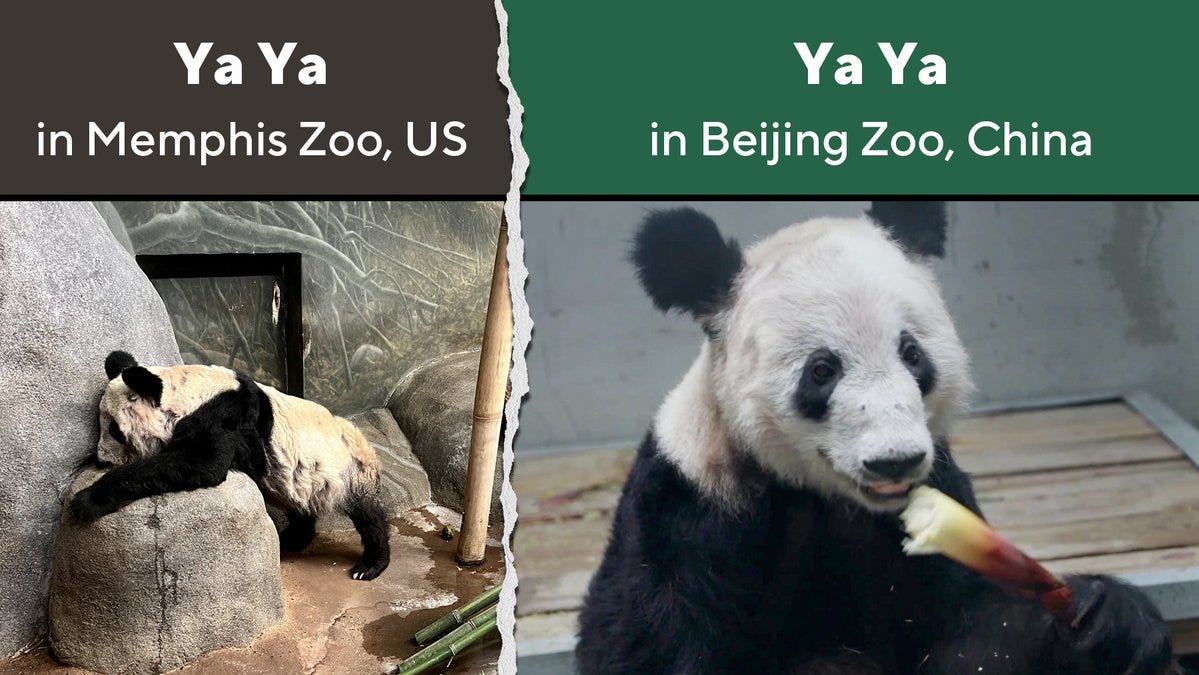
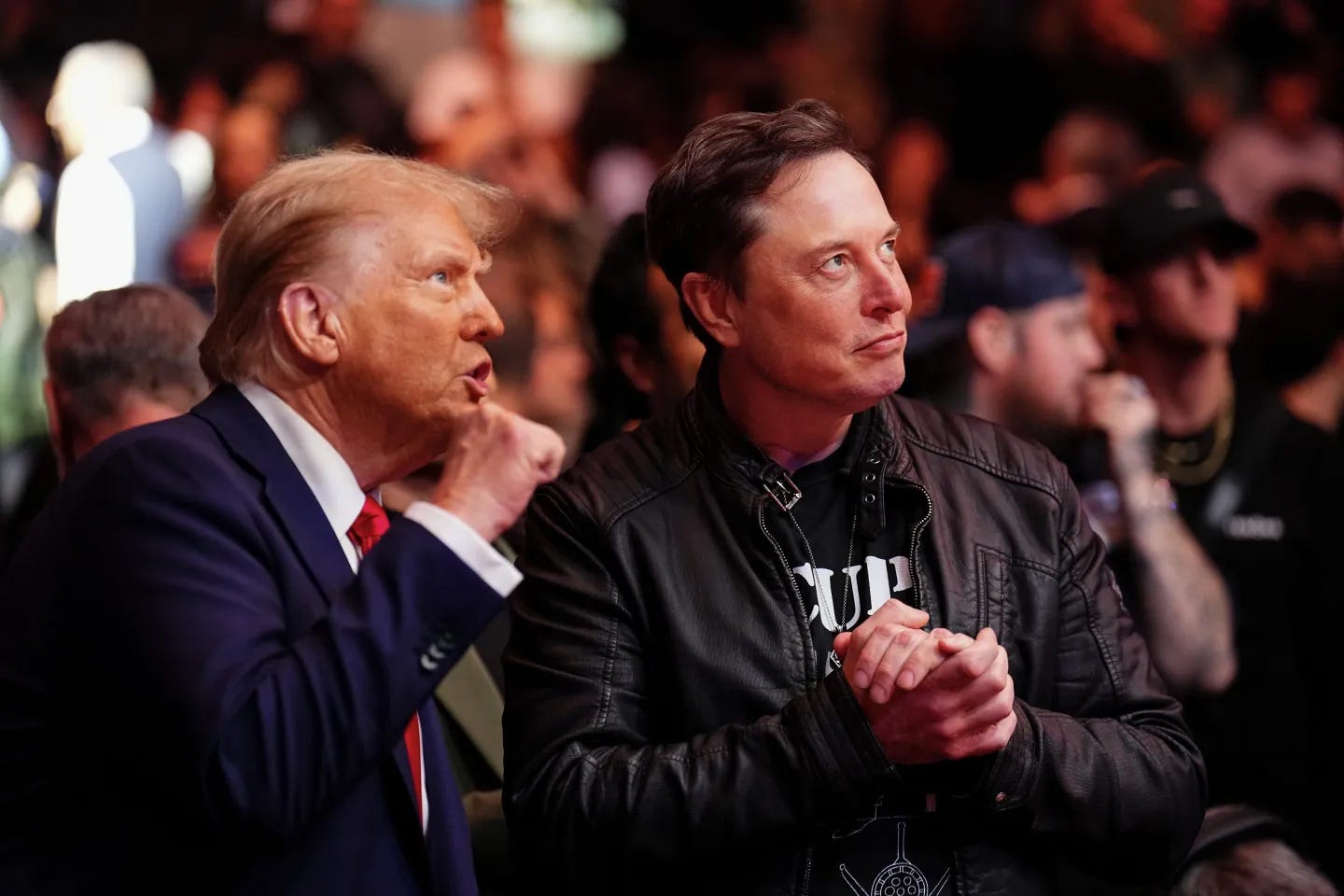
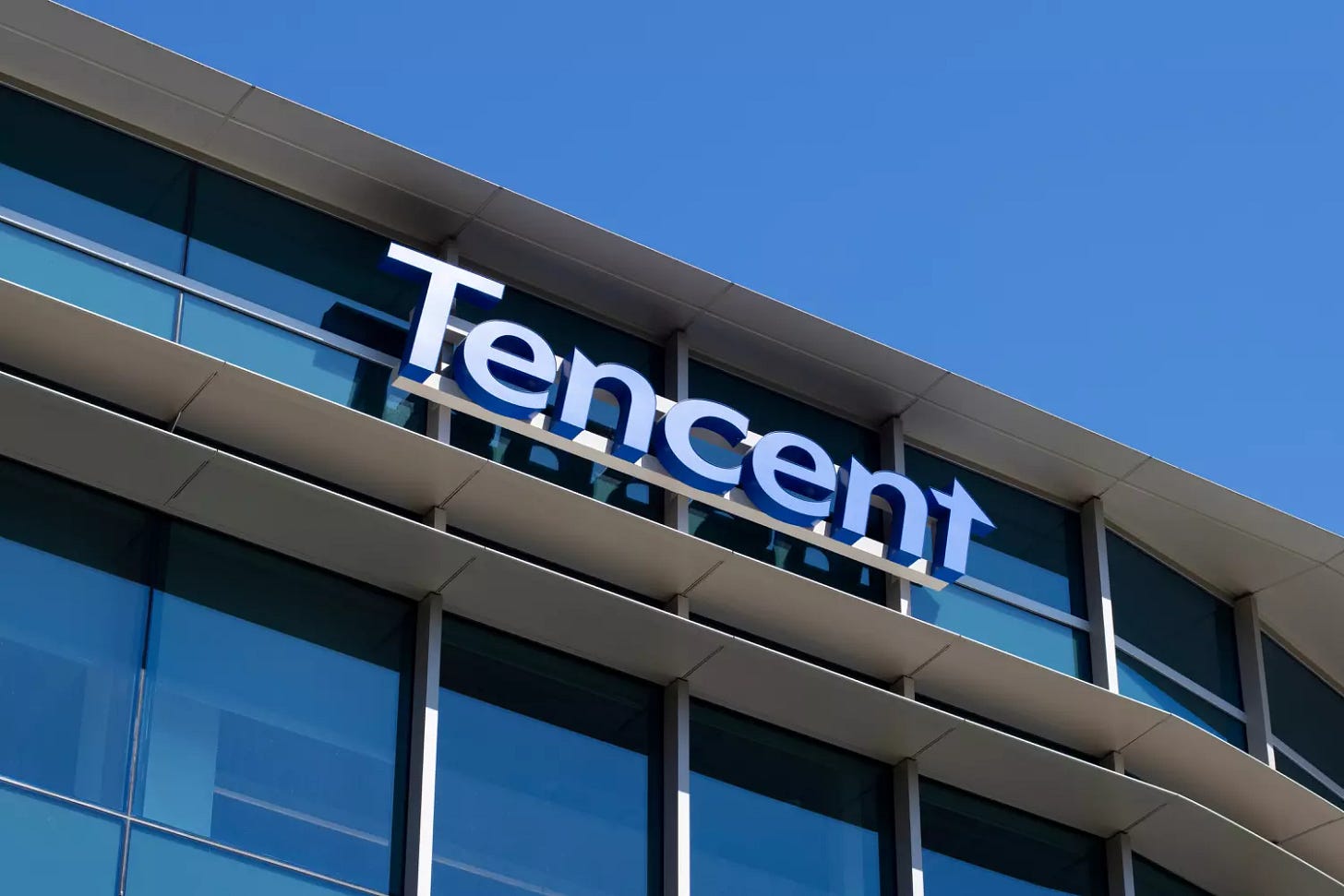


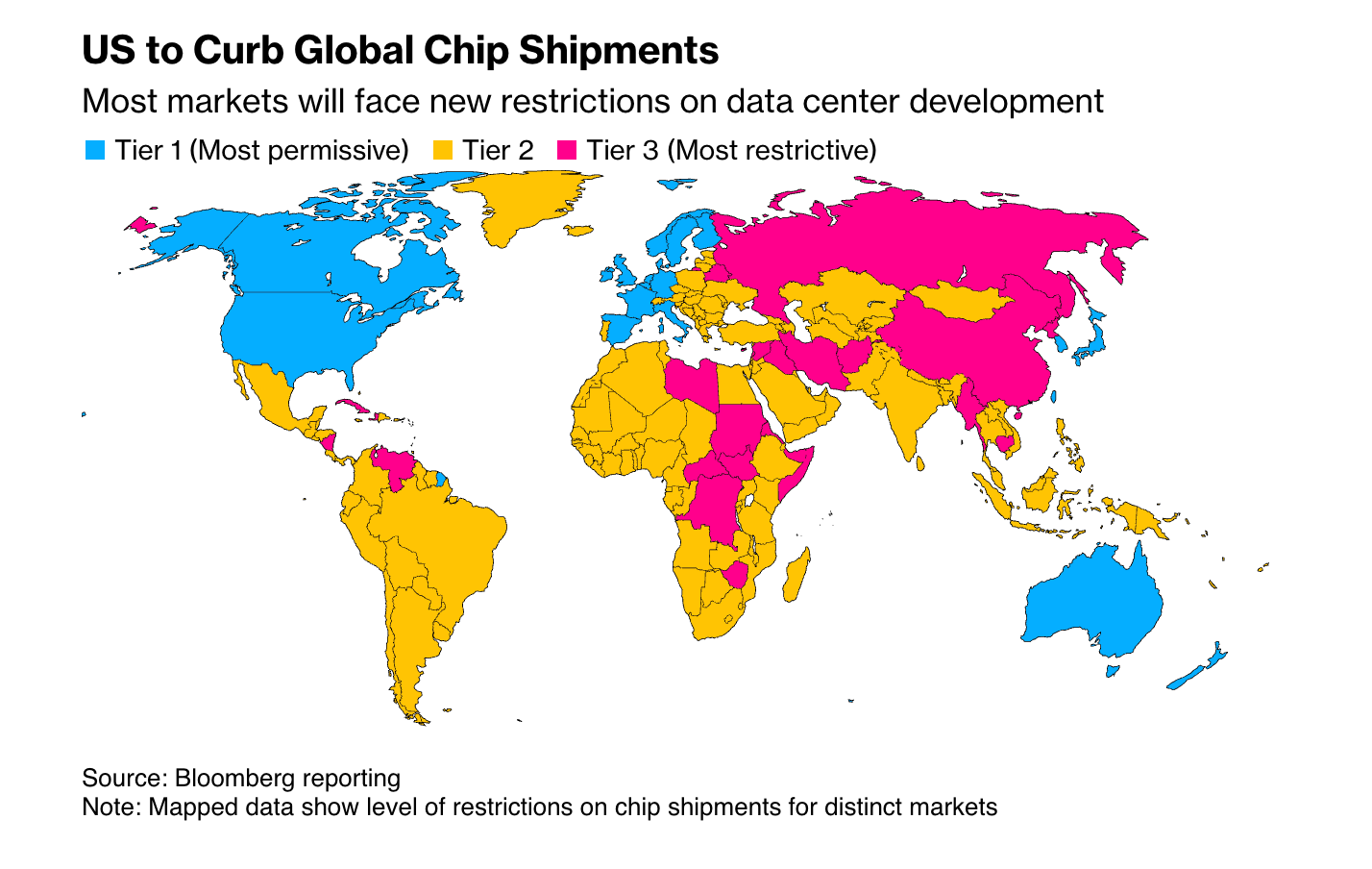

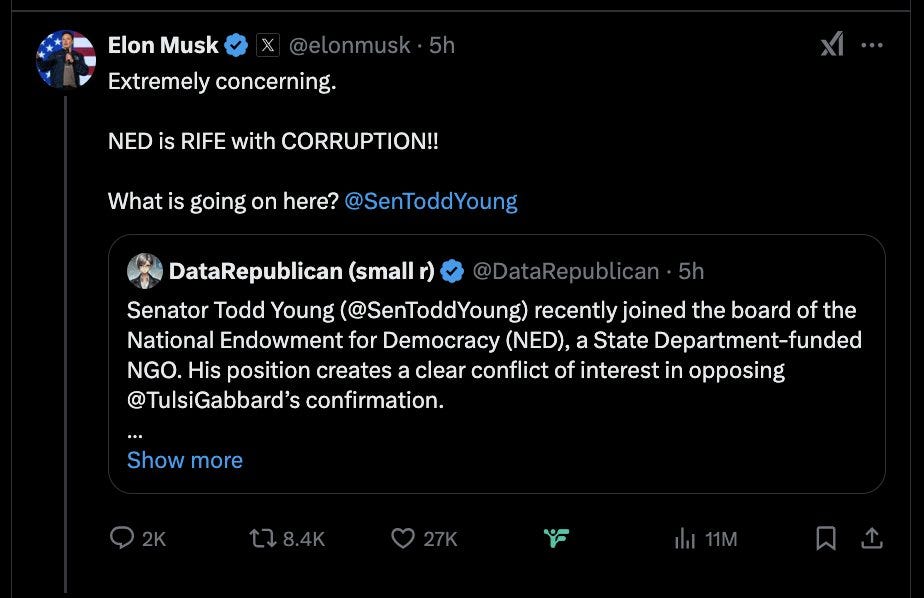

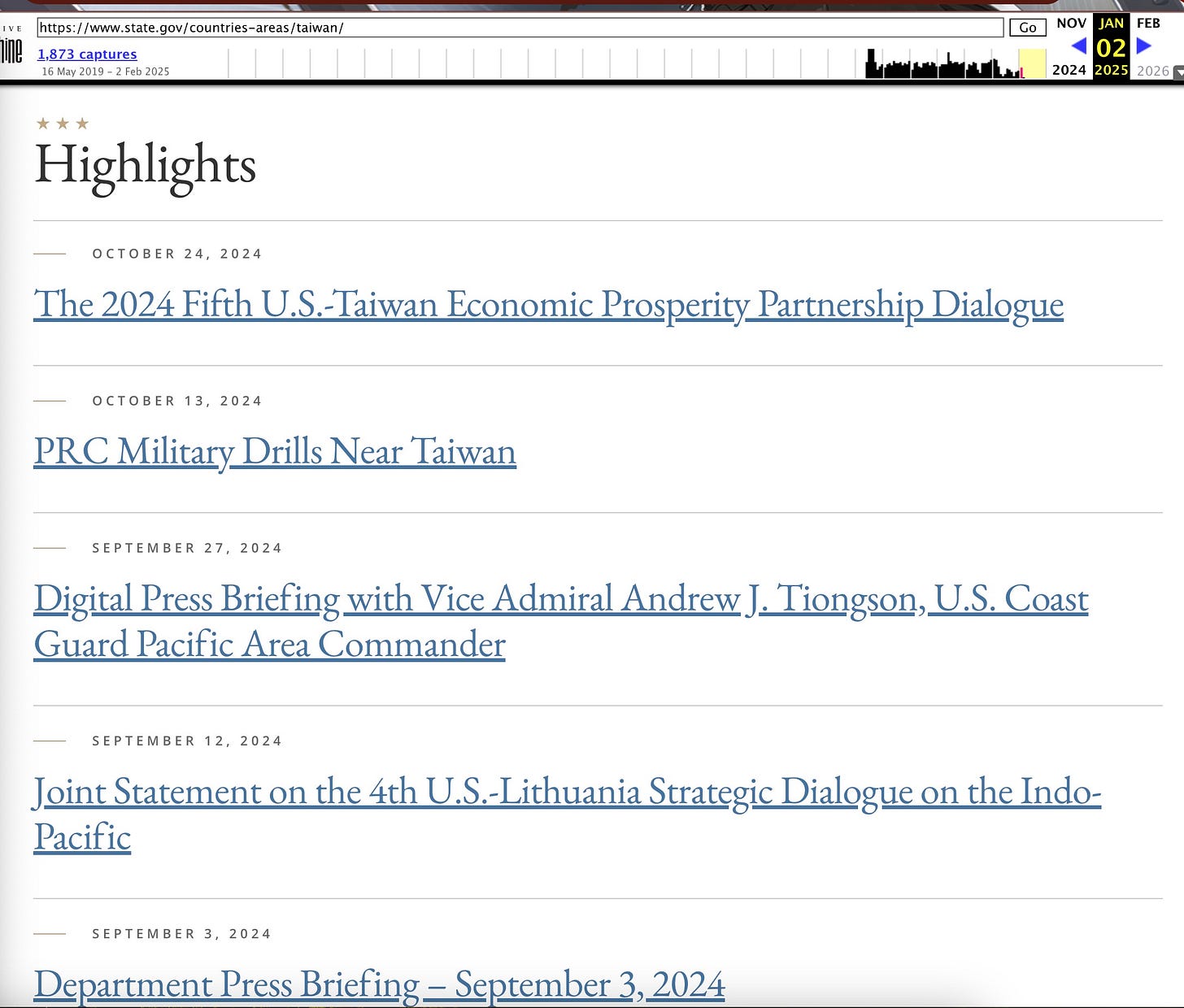
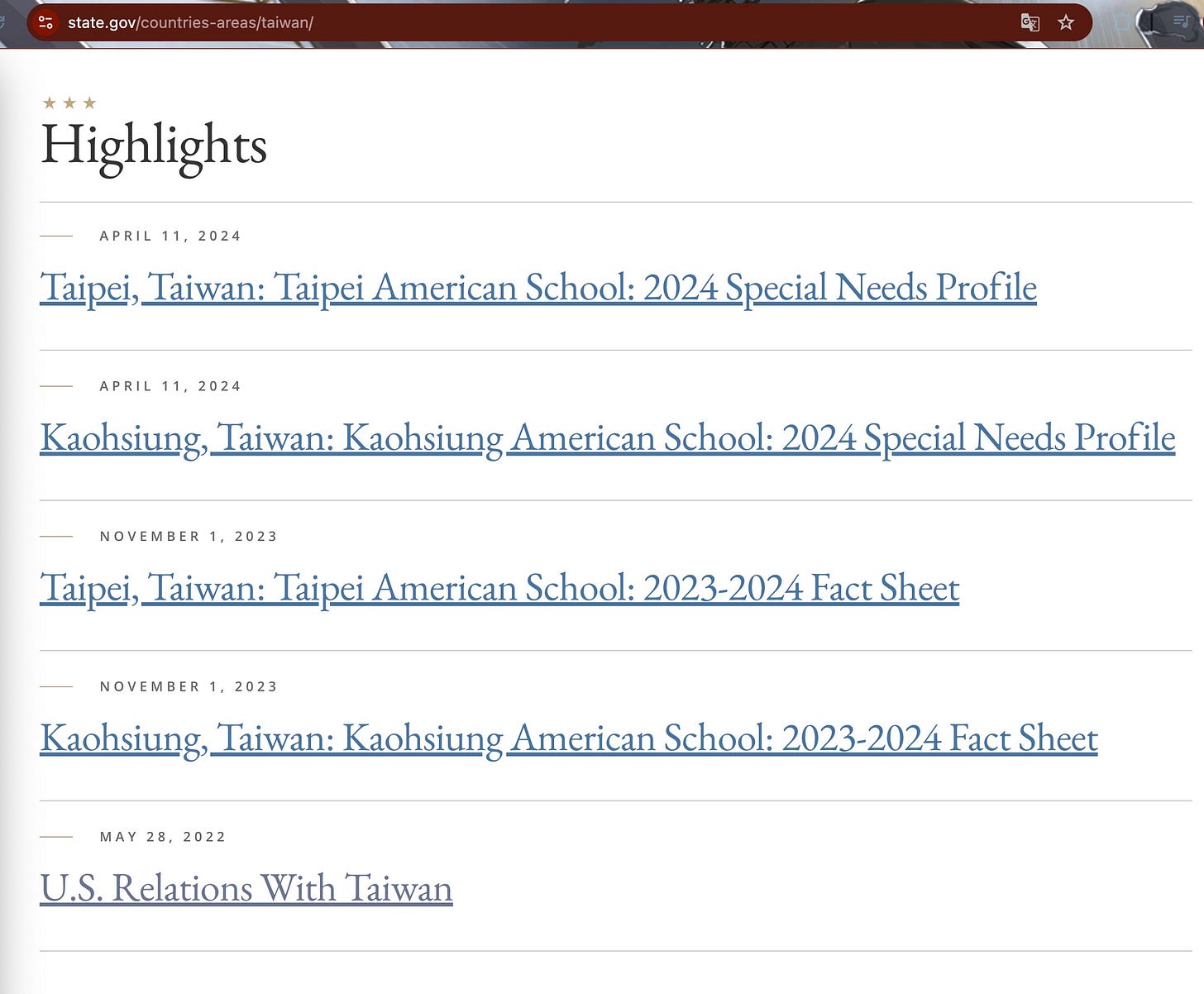


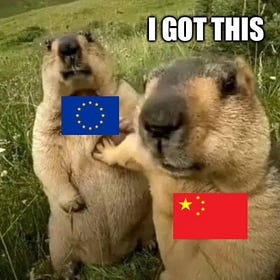

Great article Robert. In my estimation the wish to understand the ‘truth about China’ is already a full-blown trend, and definitely not just restricted to some in the USA.
"Can we all try to instill a strong sense of principle and authenticity in our foreign policy so we can be taken more seriously by the international community?"
Short answer: If "we're" talking about America...no.
Long Answer: "An nescis, mi fili, quantilla prudentia mundus regatur?"
(Do you not know, my son, with how little wisdom the world is governed?)
...........Axel Oxenstierna